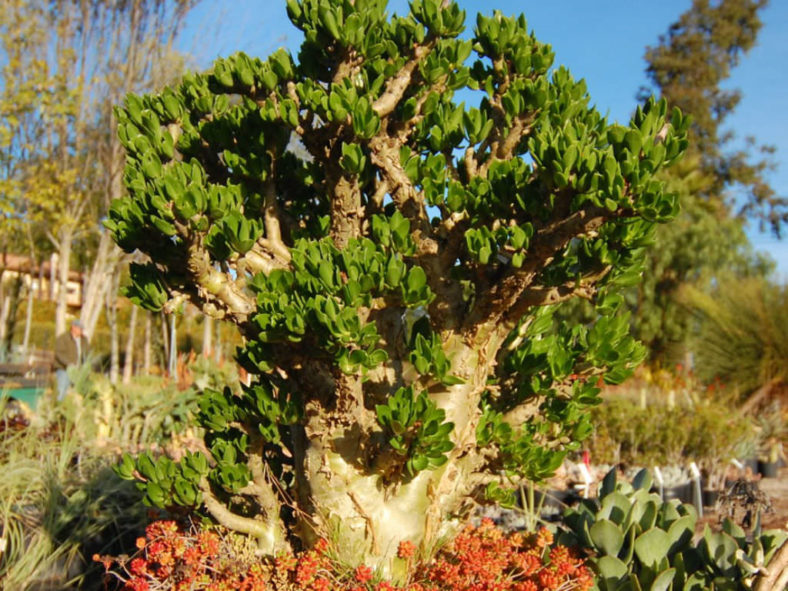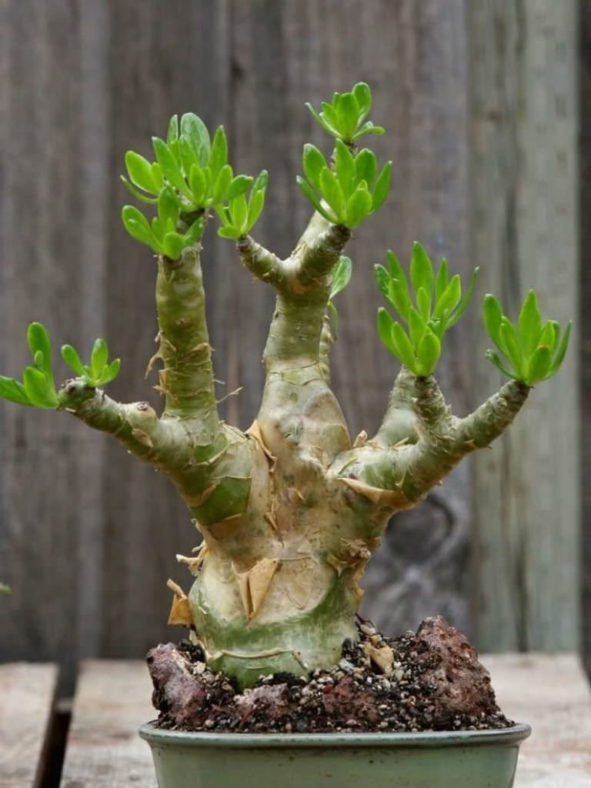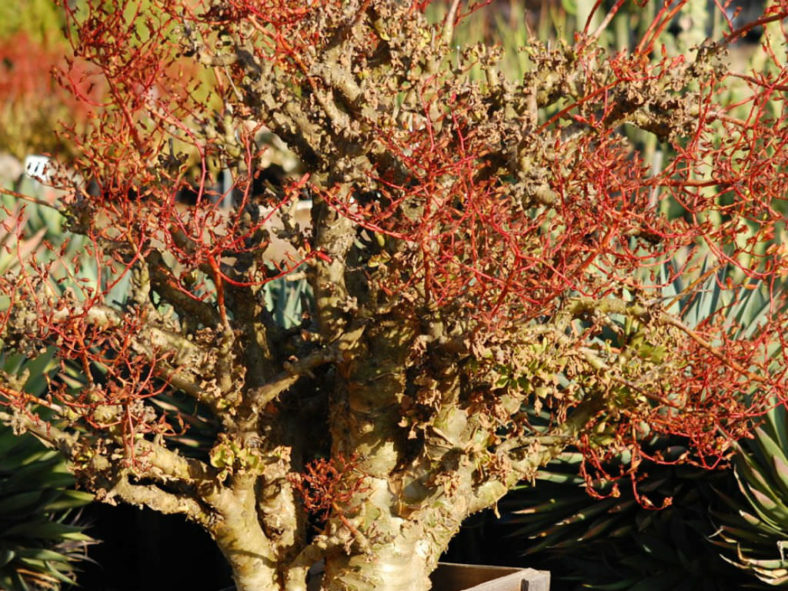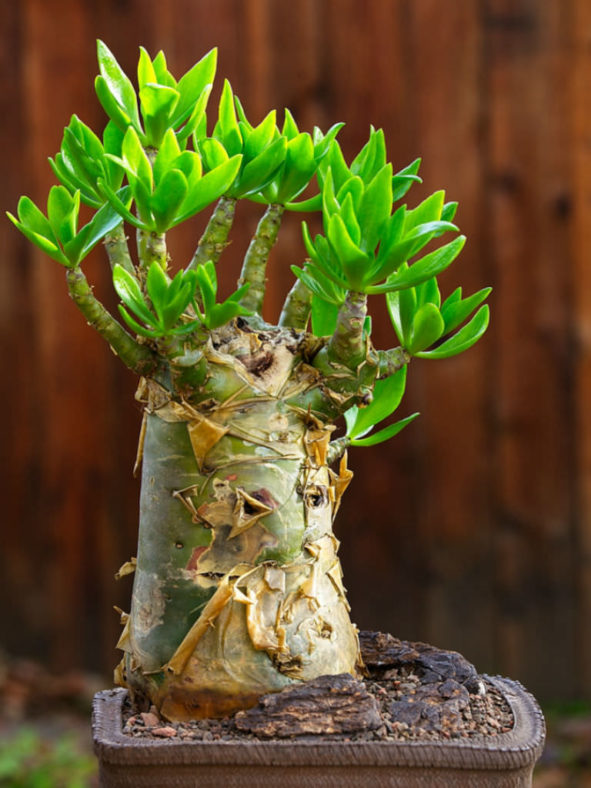Scientific Name
Tylecodon paniculatus (L.f.) Toelken
Common Name(s)
Butter Bush, Butter Tree
Synonym(s)
Cotyledon paniculata
Scientific Classification
Family: Crassulaceae
Subfamily: Kalanchoideae
Genus: Tylecodon
Etymology
The specific epithet "paniculatus (pronounced pan-ick-yoo-LAY-tus)" means "having tufts" or "tufted" and refers to the branched inflorescences.
Origin
Tylecodon paniculatus is native to South Africa and Namibia.
Description
Tylecodon paniculatus is a robust succulent shrub with a caudiciform trunk that is usually well-branched and can grow up to 8.2 feet (2.5 m) tall. This species is the largest in the genus. The thick, fleshy trank is green with attractive yellow peeling bark and can reach up to 16 inches (40 cm) in diameter. The young branches are fleshy and brittle with greyish-green bark. The leaves are grass-green and clustered around the apex of the growing tip during the winter. They are elliptic, measuring up to 3.6 inches (9 cm) long and 1.6 inches (4 cm) wide.
The flowers are orange-yellow to red and appear in upright racemes in late spring to mid-summer, just as the leaves turn yellow and drop off. They can grow up to 0.8 inches (2 cm) long.

How to Grow and Care for Tylecodon paniculatus
Light: This succulent can tolerate direct sunlight without problems, but it will also grow beautifully in partial shade.
Soil: A well-draining soil mix is key to healthy T. paniculatus. Poor drainage and overwatering most commonly cause root rot in both indoor and outdoor plants. Indoors, it is essential to use pots with at least one drainage hole at the bottom.
Hardiness: Like all Tylecodons, this succulent is highly tolerant of high temperatures and cold, frost-free conditions during the winter. T. paniculatus can withstand temperatures as low as 25 to 50 °F (-3.9 to 10 °C), USDA hardiness zones 9b to 11b.
Watering: As a winter grower, T. paniculatus requires careful watering in winter and spring. Get the soil wet, and then wait until it is dry before watering again. In summer, reduce watering to once per month.
Fertilizing: Use liquid fertilizer for cacti and other succulents in winter.
Repotting: You do not need to repot this plant often. You can do it when the container becomes too small or shallow.
Propagation: T. paniculatus can be cultivated either by seed or by cuttings. Sow the seeds in fall and winter. The best time for taking cuttings is the fall.
Learn more at How to Grow and Care for Tylecodon.
Toxicity of Tylecodon paniculatus
T. paniculatus is poisonous to livestock. It is reported to cause krimpsiekte, also known as cotyledonosis or nenta, in sheep and goats. Keep it away from children and pets.
Links
- Back to genus Tylecodon
- Succupedia: Browse succulents by Scientific Name, Common Name, Genus, Family, USDA Hardiness Zone, Origin, or cacti by Genus
Photo Gallery
Click on a photo to see a larger version.


